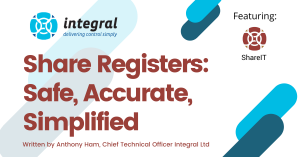7 Tips For Avoiding Data Migration Disasters

Whether you’re changing ERP, CRM, or other central applications, transferring data between systems is never a simple task.
The complexity of data-migration jobs often results in cost overruns and delays. Mistakes made during migrations can lead to costly downtime, diminished end-user productivity, and the loss of important data.
But if you do the necessary preparation work and fully think through the process, you can avoid some of the most common data migration disasters.
Here are 7 tips to keep your data migration project on track:
1. Clean up your data
Don’t migrate your bad habits. Things may have started out perfect, but it’s more than likely that data inconsistencies and data duplication were introduced over time with multiple users. So it’s important to sanitise the data before the moving the data over. Make sure you de-duplicate data and fix any data integrity problems before the problems are replicated in your new system.
2. Validate and redefine business rules
Your company’s business and validation rules may have changed since the legacy system was first built. Now is the time to make sure that the businesses rules are current and any questions or disputed processes are ironed out. Also it is advisable to see if there are any data fields that need to be changed or added, and that the necessary validations are included in the new database.
3. Check cross-object dependencies
Cross-object dependencies often are not discovered until very late in the migration process. A complex project can have dozens of different data fields coming in from different applications. Discovering new sources of data or connectivity late in the process can throw off your migration timeline. It’s better to identify external sources of data upfront and make sure that the necessary connections are in place for the new system.
4. Leverage automation
Many projects suffer from costs overruns due to human error and system downtime. While traditional ETL tools may seem appealing at the outset, they won’t allow you to maximise uptime and maintain interconnected business processes, such as the automatic update of customer address data in your ERP based on changes recorded in your CRM. Instead, look for an integration platform that supports process-based integration.
In addition, an integration platform that has prebuilt connectors to the systems you are migrating can save a lot of time and help you avoid errors. It can also let you keep both new and old systems live and updated, without risk of downtime or transaction loss, until you are ready to do the full switch. System integration platforms can provide an effective solution that will not only accelerate your data migration project, but can be useful for other system integration projects in the future, providing a high return on investment.
5. Rely on relevant expertise
Often there is a gross underestimation of just how complex and challenging data migrations can become. It is often perceived as a grunt exercise, tagged on to the end of the much higher visibility target implementation. However, each data migration project requires specialists that can find the root cause of data discrepancies and then fix them, so it’s essential that team members have the necessary professional qualifications and familiarity with the business data.
6. Don’t wait for the target to be ready
Get started early. There is so much work to do on the data quality and business rules, so there is no reason to wait for the target to be ready or even chosen. You may have a lot of data to clean up front; it may be too late to hit the deadline if you wait too long.
7. Validate and test the data migration process
Don’t save this step for the end. You really need to make sure that you’re validating and testing throughout the process. Having business users validate that the data is complete and accurate is important. The people who sign off on the data should be the ultimate consumers of the data.
Considering these factors before you start your data migration project will help increase the chances for your success. Regardless of the complexity of your migration, make sure you have a robust plan that outlines the dependencies between various tasks and milestones before you begin any work. Having a plan to work and working to plan can minimize the risk of a data migration disaster.
Originally posted at EnterpriseApps Tech by Stephan Romeder.






